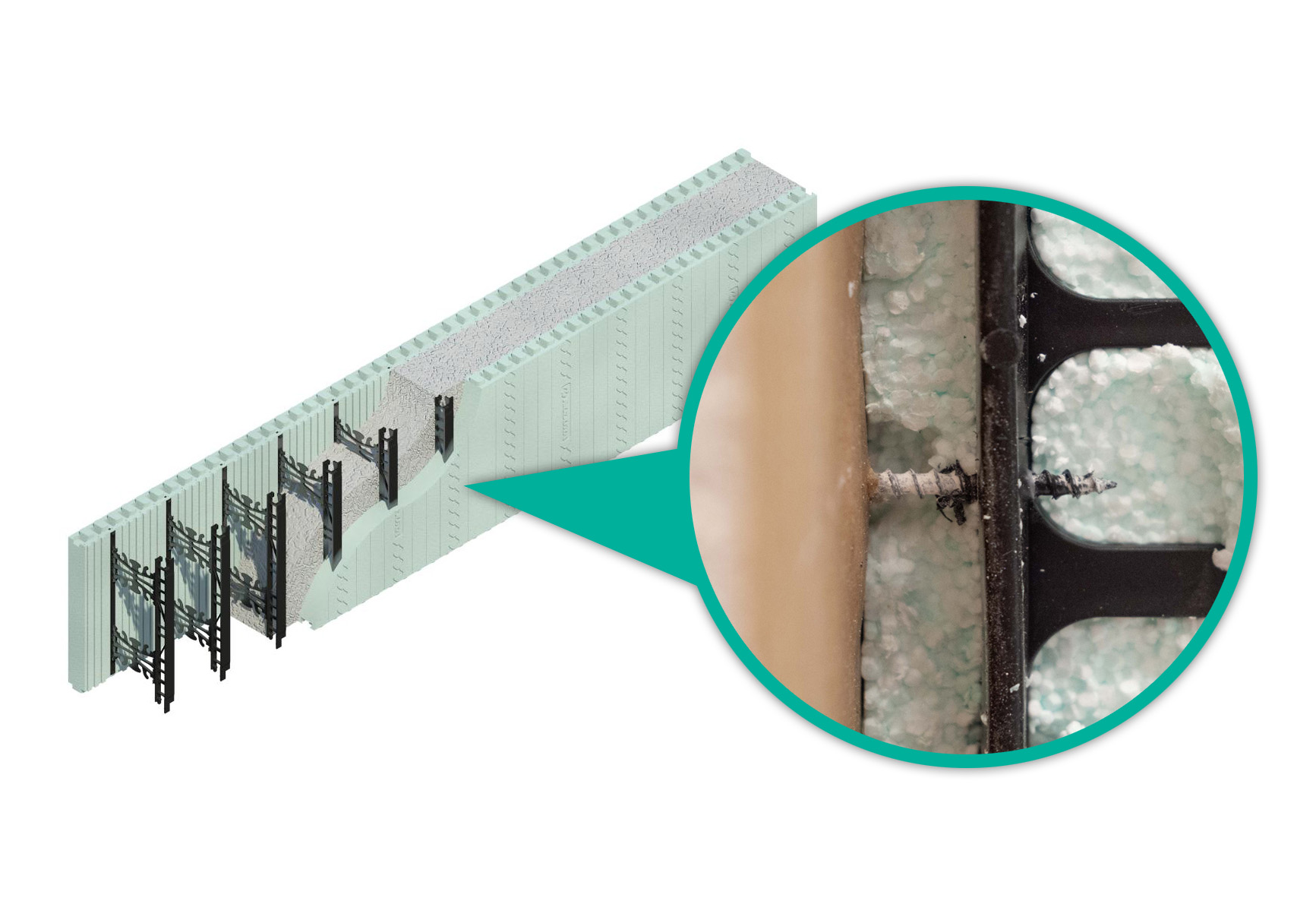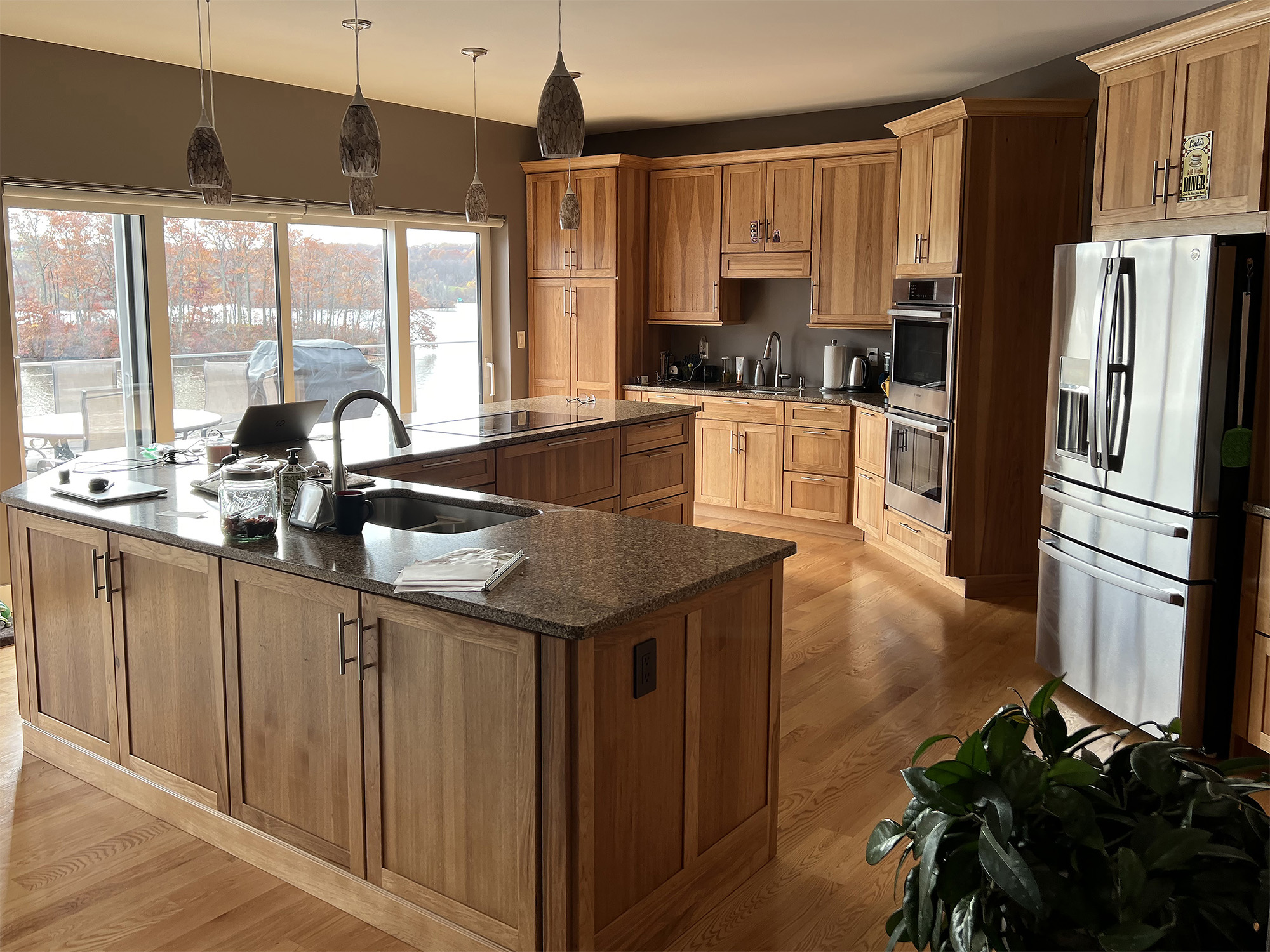
- Products
- Why Nudura
- Nudura Project Applications
- Training Academy
- Resources
- Company
Navigating Interior Finishes in Your ICF Home
If you're looking to mount a TV, kitchen cabinets, mirrors or artwork in your ICF house, you'll be pleased to know that Nudura ICF walls have built-in studs that simplify the process of attaching interior finishes. However, these aren't your typical wood studs, so finding and using these internal fastening strips is a slightly different process than you might be used to with wood-framing. Keep reading to learn how to securely attach your décor to Insulated Concrete Form walls, making your space both functional and fabulous!
How Drywall Covers ICFs
After the Insulated Concrete Form walls of your home are erected, the interior trades can begin. Drywall panels are screwed to the face of ICF walls using coarse-thread screws, which are secured into the built-in fastening strips. With Nudura, these strips are embedded within the ICF foam blocks and run vertically every 8 inches, providing a reliable anchor point for drywall and other hanging objects.
Tips for Securing Interior Finishes in an ICF House
1. Plan Ahead
When possible, before construction of your ICF home, consider where you'll want to place heavy items and those that may experience significant forces or weight, like TV brackets, cabinets and handrails. Knowing these locations in advance allows your contractor to make any necessary adjustments during installation, such as visually marking fastening strip locations or reinforcing areas requiring extra strength.
2. Finding the Studs
Once you move in, you can begin putting on the finishing touches to customize your home with artwork, towel racks, mirrors and other décor. Unlike traditional wood or steel studs, ICF walls require a different approach to finding the built-in fastening strips. Thankfully this is still a process that any DIY-er can do.
While a standard stud finder won't work, you can use a strong magnet to locate the screws that were used to install the drywall. Alternatively, some advanced wall scanners and wall imaging devices can detect the density differences of the plastic fastening strips compared to the foam insulation to indicate the stud locations. Lastly, you can measure every 8 inches from an inside corner as a starting point. From here, you may have to do some test screws to confirm, but you’ll be closer to the fastening strips than guessing blindly.
3. Lightweight Hanging
For securing items like lightweight artwork or shelves, follow the steps above to find the fastening strips and attach the item using drywall screws or anchors. These screws will go through the drywall, foam and plastic fastening strips, providing sufficient support. As with wood-framing, you will not have as much security if you screw items to just the drywall and foam, so it is always recommended to utilize the fastening strips.
4. Mounting Heavy Items
For securing heavier items, there are two additional options:
- Concrete Anchoring
You can use concrete anchors to attach items through the drywall, foam and into the concrete core of the ICF wall. You could also remove the drywall and face of the foam to screw directly into the concrete. This eliminates having to find the studs. - Wood Mounting
Another option is to rake the face of the foam back 5/8” with a hot knife tool revealing the studs. Then screw the same thickness of plywood to the fastening strips. This method provides several attachment points and spreads the force of the load across multiple points, making it ideal for heavy items like handrails or cabinets.
Hanging items over the drywall in your ICF home might seem challenging, but with a little planning and the right approach, you’ll achieve style and security in no time.
CONTACT US
We’re committed to supporting homeowners and design professionals who are interested in or use our products. We’re always happy to help and provide more information.




